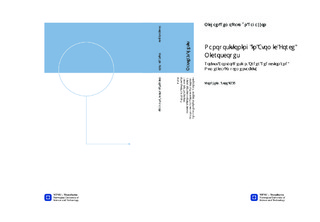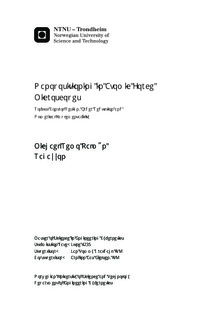| dc.contributor.advisor | Gravdahl, Jan Tommy | nb_NO |
| dc.contributor.advisor | Eielsen, Arnfinn Aas | nb_NO |
| dc.contributor.author | Ragazzon, Michael Remo Palmén | nb_NO |
| dc.date.accessioned | 2014-12-19T14:07:11Z | |
| dc.date.available | 2014-12-19T14:07:11Z | |
| dc.date.created | 2013-08-29 | nb_NO |
| dc.date.issued | 2013 | nb_NO |
| dc.identifier | 644233 | nb_NO |
| dc.identifier | ntnudaim:8968 | nb_NO |
| dc.identifier.uri | http://hdl.handle.net/11250/260914 | |
| dc.description.abstract | This thesis can be divided into two overall topics. The first concerns control design for nanopositioning devices, and specifically an Atomic Force Microscope (AFM). The second topic concerns the implementability issues involved with running a complex controller in real-time especially for a stiff system with fast modes.A robust H∞ multiple-input multiple-output (MIMO) controller is designed for the lateral positioning stage of an AFM. This controller is compared to a H∞ single-input single-output (SISO) controller based on independent axis design and a PID controller. We consider especially how much benefit there is to a more complex MIMO controller compared to independent axis controllers in terms of cross-coupling gains between the lateral axes. This is important to consider in a scanning application where any cross-coupling can be detrimental to the resulting image. Experiments are performed for this purpose. The results show that the differences in terms of cross-coupling reduction is negligible compared to noise and disturbances. This favors the choice of independent axis controllers over MIMO controllers because of their simpler design and increased implementability. In terms of dampening the resonant gain, the two H∞ controllers are shown to perform considerably better than the PID controller.A model-based controller such as the H∞ MIMO controller can quickly become complex and may be difficult to run in real-time on hardware with limited computational power. We show how to find the maximum step-size for numerical stability of a given controller using an explicit Runge-Kutta (ERK) solver as is commonly used in real-time applications. We also consider model reduction on the controller and how this affects the required step-size and how much it reduces the computational complexity. We have shown that the 18th order H∞ MIMO controller could be reduced to a 10th order controller without any significant reduction in performance or stability, which resulted in a 46.7% reduction in execution time partly because the order reduction enabled us to use a simpler solver type. | nb_NO |
| dc.language | eng | nb_NO |
| dc.publisher | Institutt for teknisk kybernetikk | nb_NO |
| dc.title | Nanopositioning in Atomic Force Microscopes: Robust Control Design, Order Reduction and Numerical Implementability | nb_NO |
| dc.type | Master thesis | nb_NO |
| dc.source.pagenumber | 134 | nb_NO |
| dc.contributor.department | Norges teknisk-naturvitenskapelige universitet, Fakultet for informasjonsteknologi, matematikk og elektroteknikk, Institutt for teknisk kybernetikk | nb_NO |

